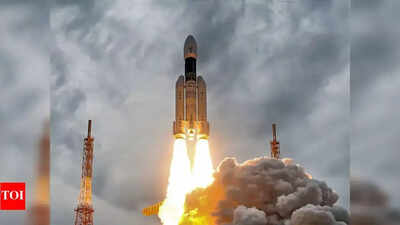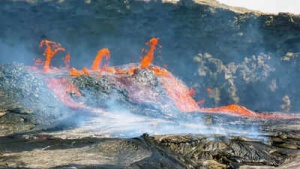Space exploration is on the cusp of a transformative era, with an impressive array of missions slated for launch in 2025 and beyond. These endeavors aim to deepen our understanding of the Moon, Mars, and the vast expanse beyond. Spearheaded by leading space agencies like NASA, ISRO, ESA, and JAXA, as well as private sector pioneers, these missions promise to advance scientific knowledge, pave the way for future human exploration, and drive technological innovation. From crewed lunar operations to robotic expeditions to distant celestial bodies, here are ten of the most compelling space missions to anticipate in the coming years.

Launch Date: 2026
Destination: Moon
Objective: Deploy scientific instruments and rovers to investigate lunar geology and validate technologies essential for upcoming Artemis missions.
Overview: The IM-3 mission is a crucial component of NASA’s Commercial Lunar Payload Services (CLPS) initiative, which is designed to foster a sustainable human presence on the Moon. It will deploy advanced instruments to analyze the lunar environment, including rovers capable of traversing and examining the terrain. Beyond its scientific objectives, IM-3 will test innovative landing systems and autonomous technologies that will be indispensable for future crewed Artemis missions. Success in this mission will bolster confidence in commercial partnerships that support lunar exploration.
Launch Date: December 2025
Destination: Mars Orbit
Objective: Examine Mars’ plasma environment and magnetic fields to gain insights into atmospheric loss.
Overview: ESCAPADE comprises two compact satellites, named "Blue" and "Gold," which will orbit Mars at varying altitudes to provide a comprehensive view of how solar wind erodes the Martian atmosphere. This process is fundamental to understanding why Mars lost much of its atmosphere and surface water, evolving from a potentially habitable world to the arid desert observed today. The mission's data will refine models of planetary atmospheres and contribute to assessing Mars’ past habitability.
Launch Date: 2025
Destination: Earth Orbit
Objective: Monitor changes on Earth’s surface with remarkable precision to study natural disasters and environmental shifts.
Overview: NISAR represents a landmark collaboration between NASA and ISRO, featuring dual-frequency radar capable of penetrating clouds and darkness to generate detailed maps of Earth’s surface. It will monitor land deformation caused by seismic and volcanic activity, track deforestation, and assess ice sheet dynamics. This mission will deliver timely data to enhance disaster response and improve understanding of the effects of climate change, making it an indispensable tool for scientists and policymakers worldwide.
Launch Date: April 2026
Destination: Lunar Orbit
Objective: Execute the first crewed mission of the Artemis program to assess spacecraft systems in lunar orbit.
Overview: Artemis II marks NASA’s return to crewed lunar missions after a long hiatus. Four astronauts will orbit the Moon aboard the Orion spacecraft, propelled by the powerful Space Launch System (SLS). This ten-day mission will evaluate life support, navigation, and communication systems in the deep space environment, ensuring readiness for the subsequent Artemis III landing mission. Artemis II is a critical milestone in establishing a sustained human presence on the Moon.
Launch Date: 2025 (Test Flights)
Destination: Low Earth Orbit
Objective: Validate the safety, life support, and avionics systems for India’s inaugural crewed spaceflight.
Overview: Gaganyaan-2 is a key element of India’s ambitious human spaceflight program. The uncrewed test flights will thoroughly assess the spacecraft’s critical systems, including environmental controls and emergency protocols. These tests are vital to ensuring astronaut safety for the planned Gaganyaan-3 mission. Success will position India among the select few nations capable of independently sending humans into space, signifying a momentous achievement in its space capabilities.
Launch Date: July 2028
Destination: Titan (Saturn’s Moon)
Objective: Explore Titan’s organic-rich surface and investigate prebiotic chemistry.
Overview: Dragonfly is an innovative rotorcraft lander designed to traverse Titan’s diverse and complex terrain. Titan’s dense atmosphere and organic compounds make it a prime location for studying prebiotic chemistry and the potential for life beyond Earth. Dragonfly will analyze surface composition, weather patterns, and chemical processes, offering unprecedented insights into how the building blocks of life might form in environments significantly different from our own.
Launch Date: September 2026
Destination: Phobos (Mars’ Moon)
Objective: Explore Mars’ moons and retrieve samples from Phobos for return to Earth.
Overview: JAXA’s MMX mission seeks to unravel the mystery surrounding the origins of Mars’ moons by collecting and returning samples from Phobos. The mission will also conduct detailed observations of Deimos. Determining whether these moons are captured asteroids or formed from Mars itself will provide valuable information about the history of the Martian system and the early solar system. The sample return is a complex undertaking that will provide invaluable material for laboratory analysis on Earth.
Launch Date: 2027
Destination: Low Earth Orbit
Objective: Conduct reusable microgravity experiments in orbit.
Overview: ESA’s Space Rider is a reusable, autonomous spaceplane designed to transport payloads for scientific and technological experiments in microgravity. It will facilitate longer-duration studies on biological processes, materials science, and plant growth, helping researchers understand how space conditions affect various systems. Its reusability reduces costs and enhances access to space for European researchers and industry.
Launch Date: April 2025
Destination: Earth Orbit
Objective: Conduct an all-sky infrared survey to study galaxy evolution, cosmic inflation, and dark energy.
Overview: SPHEREx will map the entire sky in infrared light, providing a wealth of data about the universe’s structure and history. It will investigate the origins of galaxies, measure the signatures of cosmic inflation, and explore the enigmatic dark energy driving the universe’s accelerated expansion. This mission promises to answer fundamental questions about the cosmos with unprecedented precision.
Launch Date: 2028
Destination: Venus
Objective: Map Venus’ surface geology to understand its tectonics and volcanic history.
Overview: VERITAS will generate high-resolution maps of Venus’ surface using radar to penetrate its dense cloud cover. By studying Venus’ tectonic activity and volcanic processes, the mission aims to explain why Venus evolved so differently from Earth, despite their similar size and composition. VERITAS will also help assess Venus’ potential for past habitability and provide context for comparative planetology.
These missions exemplify the cutting edge of space exploration, integrating human spaceflight, robotic explorers, and Earth observation to expand our knowledge of the solar system and our home planet. As they launch and progress over the coming years, they will inspire new discoveries and redefine humanity’s place in the cosmos.
Newer articles
Older articles
 Bezos-Backed Methane-Tracking Satellite Mission Ends Abruptly After Loss of Contact
Bezos-Backed Methane-Tracking Satellite Mission Ends Abruptly After Loss of Contact
 Africa's Rift Valley: Mantle Upwelling Fuels Volcanic Activity, Foretelling New Ocean Birth
Africa's Rift Valley: Mantle Upwelling Fuels Volcanic Activity, Foretelling New Ocean Birth
 7 Proven Habits to Nail Your Next Job Interview: Project Confidence and Authenticity
7 Proven Habits to Nail Your Next Job Interview: Project Confidence and Authenticity
 Smith Targets Test Return After Innovative Baseball Cage Rehab in New York
Smith Targets Test Return After Innovative Baseball Cage Rehab in New York
 5 Subtle Signs of Prediabetes You Shouldn't Ignore
5 Subtle Signs of Prediabetes You Shouldn't Ignore
 Oral Cancer: Know the Warning Signs, Risk Factors, and Why Early Detection is Key to Survival
Oral Cancer: Know the Warning Signs, Risk Factors, and Why Early Detection is Key to Survival
 Hair Oil vs. Serum: Which Elixir is Right for Your Hair Type? A Comprehensive Guide
Hair Oil vs. Serum: Which Elixir is Right for Your Hair Type? A Comprehensive Guide
 Blackcaps and White Ferns Face Packed Home Summer Against Cricket Heavyweights
Blackcaps and White Ferns Face Packed Home Summer Against Cricket Heavyweights
 Gambhir Defends India's Tailenders After Headingley Collapse; Cites Dropped Catches as Key Factor in Test Loss
Gambhir Defends India's Tailenders After Headingley Collapse; Cites Dropped Catches as Key Factor in Test Loss
 England Captain Stokes Lauds Duckett and Crawley for Blistering Start in Record Chase Against India
England Captain Stokes Lauds Duckett and Crawley for Blistering Start in Record Chase Against India